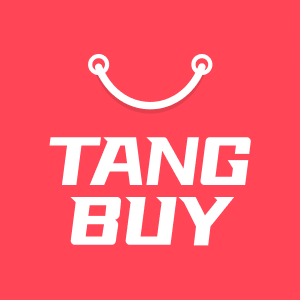2025 Dropshipping Trends: What Successful Sellers Are Doing Differently
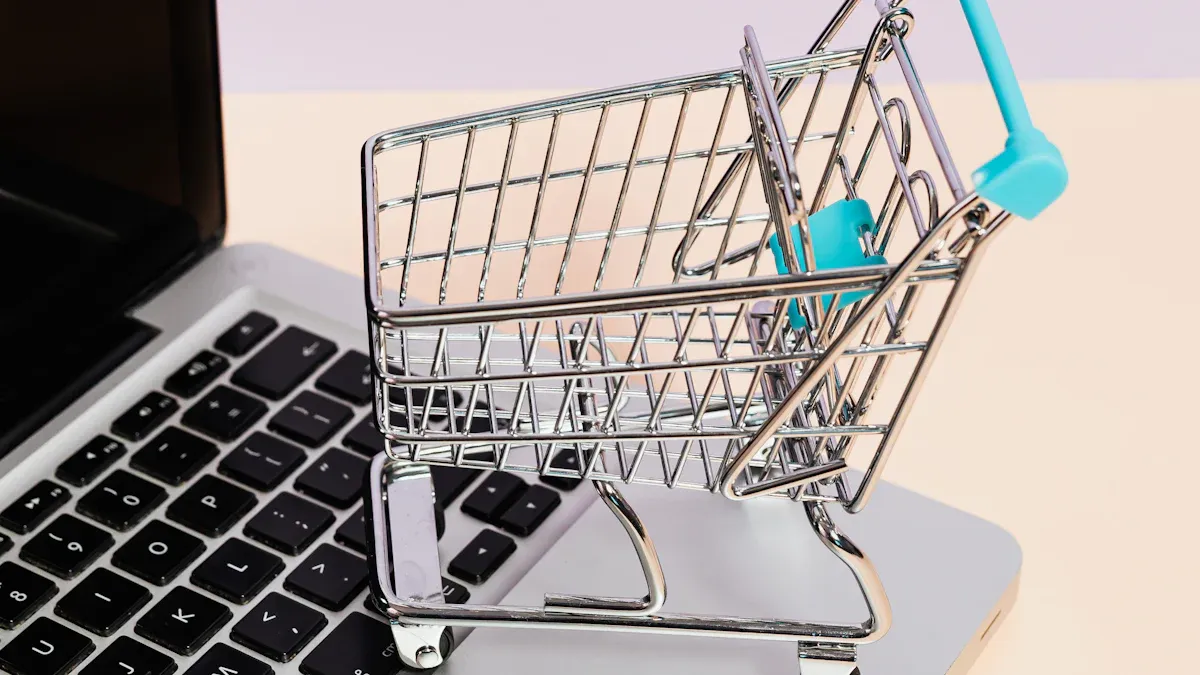
Did you know the global dropshipping market could hit nearly $470 billion in 2025? Take a look at the numbers below:
Source | Market Size 2025 (USD Billion) | CAGR (%) |
|---|---|---|
Grand View Research | 22.0 | |
Straits Research | 28.43 | |
Research Nester | 25.0 |
You need sharper strategies and smarter sourcing now more than ever. Dropshipping Trends show that success comes when you spot new niches, listen to your customers, and use tools like AI for research and personalisation.
Key Takeaways
Dropshipping is still a good business in 2025. You need smart plans to do well. Use automation tools and AI to save time. These tools help you find popular products. They also make it easy to manage orders. Focus on sustainability by selling eco-friendly products. Use green packaging to help the planet. Give customers a great experience with personal touches. Loyalty programmes can make them come back. Build a strong brand with special packaging. Use clear messages and show reviews as proof. Pick suppliers who are reliable and ship fast. Make sure they have clear return rules to keep customers happy. Choose niches that many people want but few sell. This helps you stand out and sell more. Always keep learning and try new ideas. Listen to what customers say to stay ahead.
Viability
Market Overview
You may ask if dropshipping is still a good idea in 2025. The answer is yes, but you must be clever. The global dropshipping market could reach about £464.4 billion. It is growing at a rate of 22%. This big number means people keep shopping online a lot. More than 2.7 billion people are expected to shop online this year. Millennials are leading, but all ages are joining in.
Here is a simple look at the trends shaping the market:
Market Trend / Data Point | Details / Statistics |
|---|---|
Sustainability & Consumer Awareness | Eco-friendly packaging, carbon-neutral shipping, product transparency |
Live Shopping & Influencer Marketing | 40% of US consumers buy via livestream; TikTok & Instagram are key platforms |
New Marketplaces (Temu & Shein) | Temu: 292M monthly users, $70.8B GMV in 2024; Shein: 88.8M shoppers, $50B revenue in 2024 |
Omnichannel Expansion | Pop-up shops, Walmart and Amazon partnerships |
AI-Driven Tools | AI for product research, customer support, ad creation; AI market at $244B in 2025 |
BNPL & Checkout Trends | BNPL usage at $560B in 2025, 21.7% YoY growth |
Dominant Product Categories | Fashion (£802.33B), Beauty & Personal Care (£672.20B), Home & Garden (~£130B), Electronics (30% of NA) |
Ecommerce Behaviours | 2.77B online shoppers globally; 227M in the USA |
Social Commerce & Short-Video Marketing | Social commerce to hit £2.9T by 2026; short-video ads are critical |
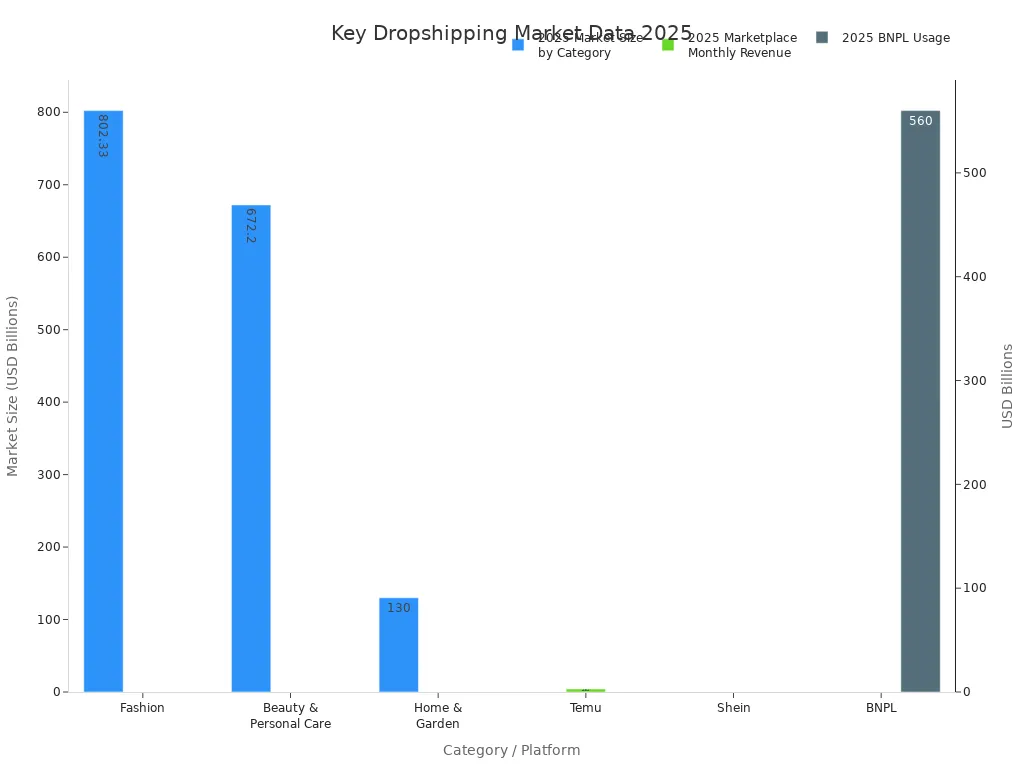
Challenges
There is more competition now than before. Dropshipping is easy to start, so many people try it. This makes it tough to stand out and keep good profits. You also have to deal with:
Problems in the supply chain like late shipping and quality checks.
Fixing supplier mistakes and helping unhappy customers.
Shoppers who know about cheaper choices like Temu and Alibaba.
The need for faster shipping and better service.
Higher costs for shipping and adverts.
You cannot just open a shop and wait for sales. You must build a brand, pick a good niche, and always try to get better.
Opportunities
Even with these problems, there are still many chances to win. More people are shopping online, especially in the US and Asia Pacific. You can find new markets and products. Here are some ways to stay ahead:
Pick smart niches to avoid too much competition.
Make your brand strong and care about your customers.
Work with good suppliers for fast and quality shipping.
Use automation and AI to save time and spot trends.
Sell different products and use more sales channels, like private labelling.
Make your shop easy to use on phones and computers.
Try new marketing like working with influencers and using short videos.
Use data to see what sells and what your customers want.
If you keep changing and put your customers first, dropshipping can still be a good and flexible business for you in 2025.

Dropshipping Trends
Do you want to know what makes top dropshipping sellers different in 2025? Let’s look at the biggest Dropshipping Trends right now. Automation, sustainability, and customer experience are the main things for success. If you want to stay ahead, you must learn these skills.
Automation
Automation is changing how you run your dropshipping shop. Smart tools can do boring jobs for you. This saves you hours every day. You get more time to grow your shop and make customers happy.
Product Research
Finding good products used to take a long time. Now, AI-powered tools help you spot trends and guess what people want. Tools like Oberlo, AliDropship, and Zik Analytics help you find popular products. They also check supplier ratings and watch what your rivals sell. Shopify Flow and Spocket let you add products and update listings automatically. You do not need to worry about selling out or missing new trends.
AI tools help you know which products will sell best. This stops you from running out of stock or having too much.
Real-time inventory updates show what you have right now.
Dynamic pricing tools like Price2Spy change your prices when the market changes.
Order Management
Order management can get messy when your shop grows. Automation tools like AutoDS, DSers, and Zendrop help with order processing and shipping updates. They also connect with suppliers for you. You can keep your inventory the same on all your sales channels. This means you never sell something that is not in stock.
Here is a quick look at how automation helps your business:
Impact Area | Measurable Effect | Explanation |
|---|---|---|
Order processing automation | Tools like AutoDS and DSers save you hours, so you can handle more orders | |
Customer service outsourcing | Lower costs from £12-20 to £2-6 per hour | You save money and still give good service |
Automated email marketing | 25-30% more money from current customers | You earn more without extra work |
Inventory management | Fewer stockouts and refunds | You make more profit and keep customers happy |
Profit scaling | £80-£240 to £20,000-£36,000 monthly net profit | Your profit grows a lot as your sales go up |
Tip: Use chatbots like Tidio to answer questions fast and bring back shoppers who leave their carts. This keeps customers interested and helps you sell more.
Sustainability
Sustainability is not just a trend. It is very important in 2025. More people want eco-friendly products and want brands to care about the planet.
Eco Products
You can stand out by selling products that help the environment. Think about reusable kitchen items, biodegradable packaging, and sustainable fashion. Almost half of shoppers now pick eco-friendly options to help the earth. If you show you care about green values, you will get loyal customers.
Work with eco-certified suppliers for ethical products.
Use packaging that is plastic-free, recycled, or biodegradable.
Offer carbon-neutral shipping by joining offset programmes.
Supply Chain
A green supply chain is as important as green products. Dropshipping lets you choose suppliers who share your values. Shops like EarthHero and The Kind Store have grown fast by using recycled packaging and local suppliers to cut carbon emissions. You can also use technology to track your supply chain and prove your green claims.
Business Name | Sustainable Practices Adopted | Business Outcomes and Metrics |
|---|---|---|
EarthHero | Eco-certified suppliers, recycled packaging, carbon-neutral shipping | 200% growth in 2022 |
Package Free Shop | Zero-waste products, strict supplier standards, minimal packaging | £3.5M revenue, 45% more loyalty, 30% lower packaging costs |
The Kind Store | Vegan products, biodegradable shipping, local suppliers | 150% year-over-year growth |
Note: 73% of shoppers will pay more for sustainable products. If you show your eco efforts, you will get more buyers and build trust.
Customer Experience
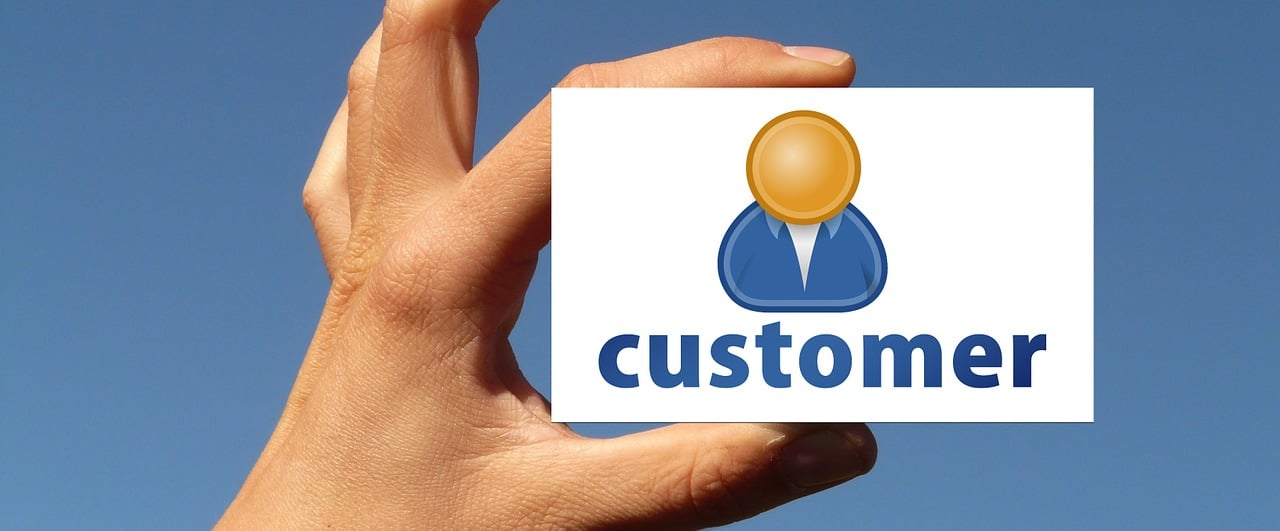
Customer experience is key for all successful Dropshipping Trends. You want your customers to feel special, come back, and tell their friends about your shop.
Personalisation
Personalisation makes shopping easier and more fun for your customers. You can use AI to suggest products, send special emails, and give discounts based on what each shopper likes. This helps you sell more and keeps people coming back.
Impact Area | Description | Supporting Metrics / Examples |
|---|---|---|
Enhances Customer Experience | Personalised marketing shows the right products, so customers find things faster. | More people buy |
Builds Trust and Loyalty | Special offers make customers feel valued, so they buy again. | Customers return more |
Increases Conversion Rates | Product suggestions and discounts make people buy on impulse. | Sales go up |
Boosts Brand Differentiation | Tailored marketing helps your shop stand out. | People remember your brand |
Improves Customer Retention | Personalised emails and follow-ups keep customers interested. | Customers stay longer |
Loyalty Program Integration | Points, levels, and rewards make customers loyal. | More repeat buyers |
Loyalty
Loyalty programmes turn one-time buyers into fans for life. You can give points, special discounts, or free shipping as rewards. Thank-you notes, post-purchase emails, and special offers make shoppers feel good. Simple and clear programmes work best.
Use tools like Zendesk and LiveChat for quick, friendly help.
Give birthday rewards, referral bonuses, and VIP perks.
Keep customers updated with shipping info and surveys.
Remember: Happy customers spend more, come back often, and help your brand grow by telling others.
Dropshipping Trends in 2025 show that if you focus on automation, sustainability, and customer experience, your business will stand out and do well.
Branding
Brand Identity
You want your shop to be noticed. In 2025, a strong brand helps you gain trust. It also makes customers return. You can do this by focusing on some main things. Make a special logo and use the same colours and fonts everywhere. Share your story. People like brands with a mission or message they understand. Use branded packaging. A fun unboxing makes your shop stand out. Always check your product quality. Order samples and talk with suppliers. Do more than just adverts. Try SEO blogs, work with influencers, and post on social media. Build a group of fans. Give value, not only discounts. Use branding tools, your own website, and order samples to look pro. Make your return policy simple and give friendly help. Even if you use the same suppliers, your packaging and posts can make you different. Building a brand takes time and hard work. But it brings loyal customers and better profits.
Tip: Be consistent. Keep your brand message and look the same everywhere. This helps people remember you.
Private Labelling
Private labelling lets you control your products and profits. You can change items to fit what your customers want. This makes them feel special and keeps them coming back. Offer products that only you sell. This makes your shop unique. Use smart branding and design to stand out. Set your own prices. You can change them for more profit. Listen to your customers. Their ideas help you get better and build strong bonds. Private label brands often make more money—sometimes up to 35%. You face less competition and get more loyal buyers. You can start with low costs, as you do not make the products yourself. Custom logos, packaging, and messages help you build trust and get repeat sales.
Note: Private labelling is more work, but it gives you better profits and loyal customers.
Social Proof

People trust what others say about your shop. Social proof is a strong tool you have. It builds trust and helps shoppers feel safe buying from you. Most shoppers read reviews before buying. Many ask friends or family for advice. Best-seller tags and badges show others love your products. Recent purchase alerts make people want to buy quickly. Good reviews and stories make your shop look honest. Social media posts from real buyers boost trust. Influencer and expert support adds trust too. Photos and videos from customers show real people using your products.
Remember: Put reviews, ratings, and stories near your “Buy” buttons. This helps shoppers decide and boosts your sales.
Fulfilment

Reliable Suppliers
You want your business to work well. This starts with picking the right suppliers. Good suppliers help you avoid problems and keep customers happy. Here is what you should look for:
Easy-to-understand return, shipping, and payment rules that fit your shop.
Warehouses in different countries for quicker delivery and more reach.
Quick shipping and trusted delivery companies with tracking.
Many products so you can give customers more choices.
Fair prices and good quality to stay ahead of others.
Good reviews from other dropshippers show the supplier is trustworthy.
Helpful and quick customer service to fix problems fast.
Always read supplier reviews and check their ratings before choosing. Try their customer service yourself to see if it is good. Use trusted supplier lists, like ones from AutoDS, to save time. Make sure your supplier has warehouses near the places you want to sell. This helps you deliver faster and makes customers want to buy again.
Tip: A good supplier is like a business friend. Treat them well and talk often for the best results.
Fast Shipping
Fast shipping is very important in 2025. Shoppers want their orders quickly. If you are slow, they will shop somewhere else. Look at these facts:
Statistic Description | Value/Percentage |
|---|---|
Shoppers expecting delivery within two hours or less | 77% |
Average delivery time as of November 2024 | 3.7 days |
US consumers expecting delivery within 2-3 days | Over 40% |
Shoppers valuing two-day shipping | 67.77% |
Shoppers less likely to buy again if delivery delayed | 69% |
Standard shipping duration | 2-5 business days |
Shoppers willing to pay extra for faster delivery | 58% |
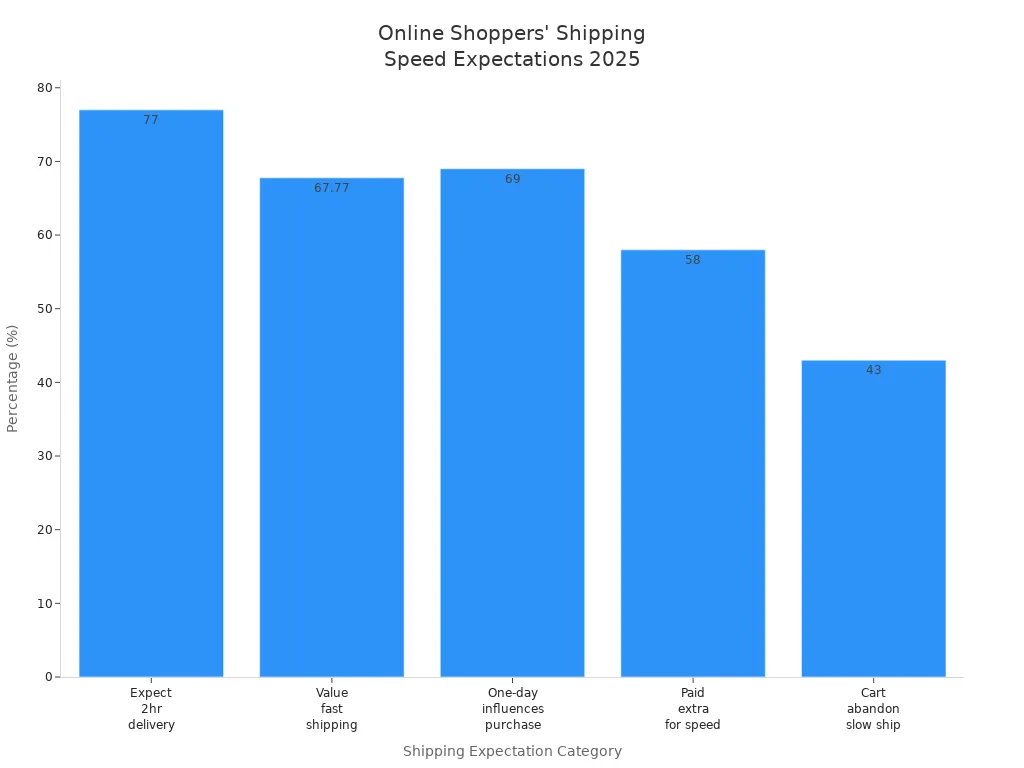
If your shipping is slow, 43% of shoppers will leave their carts. You can stop this by using suppliers with warehouses close to your customers. Give tracked shipping and clear delivery times. Tell customers when their order is coming. Fast and reliable shipping builds trust and makes people return.
Returns
Returns can help or hurt your shop’s name. A simple and fair return policy helps you gain trust and sell more. Here is what top dropshipping shops do:
Say which products can be returned.
Set a clear time for returns—like 14, 30, or 60 days.
Explain refund rules, including item condition and any fees.
Tell who pays for return shipping. Free returns work well for expensive items.
Give easy return steps and contact details.
Make your return policy easy to find on your website.
Use data to see why people return things and make your products better.
Train your team to handle returns kindly and carefully.
A good return policy makes customers feel safe. It also makes them want to buy again. Automated return tools can help you manage returns and keep everyone happy. When you put customers first, you build loyalty and grow your brand.
Note: A clear and friendly return policy is not just a rule. It gives shoppers a reason to pick your shop over others.
Niche Selection
Choosing the right niche can make or break your dropshipping business in 2025. You want to find products people want, but you also need to avoid crowded markets. Let’s break down how you can spot high-demand, low-competition, and emerging niches that help you stand out.
High-Demand Niches
You want to sell what people are searching for. High-demand niches bring steady traffic and sales. But how do you find them? Here’s a simple process you can follow:
Use Google Trends to check if interest in your product is rising or falling. Enter keywords and look for upward spikes.
Watch social media platforms like Twitter, Instagram, and TikTok. Track hashtags and viral content to see what’s hot right now.
Explore online communities such as Reddit and Facebook groups. People often talk about new interests and lifestyle changes there.
Try eCommerce search tools to spot trending products and see what’s selling fast.
Tip: Don’t just guess. Let data guide your choices. If you see a product getting lots of attention in several places, you’ve likely found a winner.
Low Competition
You don’t want to fight with hundreds of other shops for the same customers. Low-competition niches give you a better chance to shine. Here’s how you can find them:
Use keyword research tools like Ahrefs, SEMrush, or KWFinder. Look for keywords with good search volume but low difficulty.
Check Google’s Related Searches and Google Suggest. These show what people are really looking for.
Analyse Google Trends to see if a niche is growing, stable, or fading away.
Use Google Keyword Planner to get more details about keyword demand and competition.
Study your competitors. See who is selling what, and look for gaps in the market.
Try platforms like Wholesale2B. They let you filter products by demand, saturation, and supplier reliability.
Note: Always check if a niche is too crowded before you jump in. A smaller, less competitive market can be much more profitable for you.
Emerging Niches
If you want to get ahead, keep an eye on new and growing markets. Emerging niches often have less competition and lots of room to grow. Here are some examples that show strong potential for 2025:
Emerging Dropshipping Niche | Why It’s Growing |
|---|---|
Customisation is popular. The market could grow by 25.3% until 2031. Low start-up costs and higher profit margins. | |
Coffee Dropshipping | More people love speciality coffee. Organic and fair-trade options are booming. Subscriptions build loyal customers. |
Wholesale Baskets | Great for gifts and holidays. Bundles increase order value. Demand spikes during celebrations. |
Pet Supplies | Pet ownership is up. People spend more on their pets. Many product options and high profits. |
Home Security | Smart home security is a £5 billion market by 2025. Safety concerns drive demand. |
Car Accessories | The auto parts industry is huge. Gadgets and accessories are always in demand. |
Party Supplies | People celebrate all year. This niche stays strong and covers many events. |
Sustainable Products | Eco-friendly items are trending. More shoppers want reusable and green products. |
If you spot a new trend early, you can build your brand before the market gets crowded. Keep researching and stay curious. Your next big niche could be just around the corner.
Product Categories
Top Categories
You want to know what sells best in dropshipping for 2025? The top categories are changing fast, but some always stay strong. Here are the product types you should watch:
Home improvement items like paint, flooring, décor, appliances, and lighting.
Pet supplies such as biodegradable dog poop bags, paw cleaners, and pet cameras.
Jewellery and accessories, including magnetic therapy earrings and heart-shaped necklaces.
Auto parts and accessories like car battery chargers, dash cameras, and phone holders.
Drones, especially mini quadcopters and dual HD camera models.
Gaming products for all ages.
Print on demand items, such as custom mugs, t-shirts, and phone cases.
Books in many genres, from fiction to cookbooks.
Electronics, including waterproof Bluetooth speakers and VR headsets.
Furniture and home décor, like round side tables, floral rugs, and luxury lamps.
You will notice that trends change with the seasons. Winter wear and home improvement do well in the first quarter. Summer essentials pick up in the second quarter. Holiday gifts and décor shine in the last months of the year. If you use automation tools, you can spot these trends early and keep your shop stocked.
Tip: Keep an eye on what’s trending each month. This helps you stay ahead of your competitors.
Print on Demand
Print on demand (POD) is growing fast in dropshipping. You can offer custom products without holding any stock. Customers love to personalise their items, and you get to sell unique designs. The market for POD is booming in 2025. Take a look at these numbers:
Metric | Value | Year/Period |
|---|---|---|
Annual Growth Rate | 23% to 25% | 2025 |
Market Size Estimate (Low) | $8.16 billion | 2025 |
Market Size Estimate (High) | $12.96 billion | 2025 |
Market Size 2025 Estimate | $10.78 billion | 2025 |
Market Size Projection 2033 | $57.49 billion | 2033 |
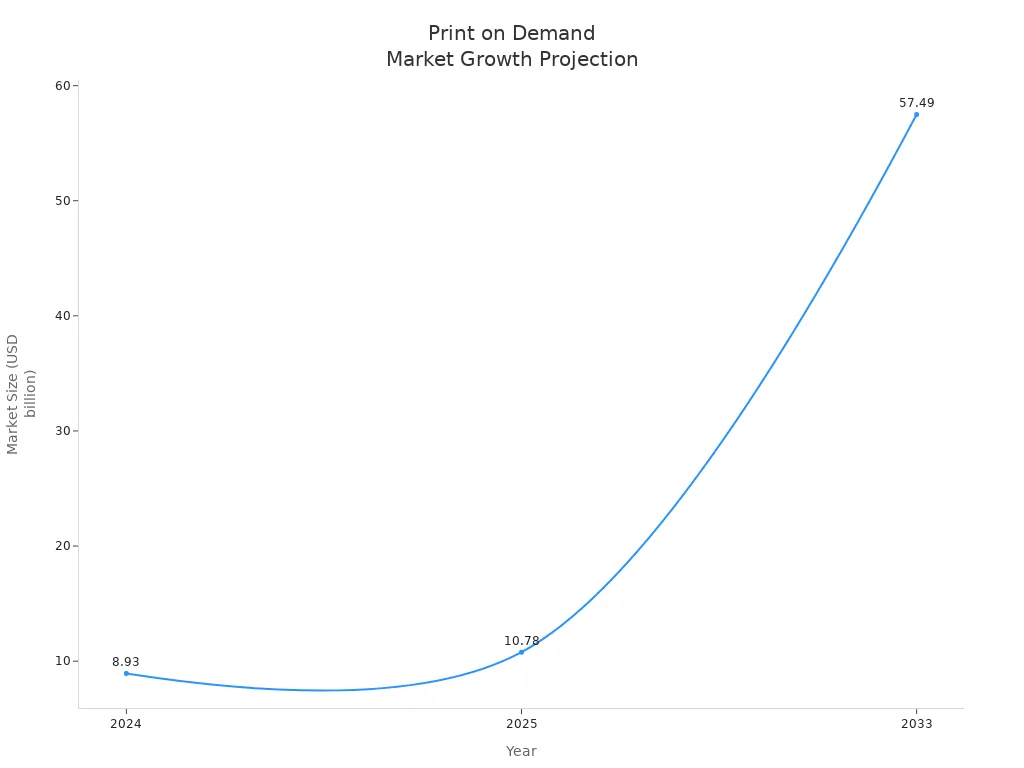
You can sell custom t-shirts, mugs, phone cases, and more. POD lets you test new ideas quickly. You do not need to worry about unsold stock. If you want to stand out, try offering limited edition designs or work with local artists.
Note: The Asia-Pacific region is growing the fastest for POD. You might want to target these shoppers for even more sales.
Digital Products
Digital products are a smart choice for dropshipping in 2025. You do not need to ship anything. Customers get their products instantly. You save money on storage and delivery. Here are some reasons why digital products work well:
You have almost no fulfilment costs.
Profit margins are high because you can sell the same product many times.
Instant delivery makes customers happy.
Digital products are eco-friendly, which many shoppers like.
You can sell on platforms like Etsy, Gumroad, and Shopify.
Popular digital products include ebooks, how-to guides, digital planners, stock photos, and digital art. You can set up your shop easily and use automated tools for delivery.
But you should also know about the challenges. You must protect your products with the right licences. Write clear terms for refunds and usage. Follow privacy laws like GDPR. Watch out for high competition. Focus on a niche and build a strong brand to stand out. Always check your suppliers and listen to customer feedback.
Tip: If you want long-term success, keep learning and adapt to new trends. Digital products can help you grow your dropshipping business with less risk and more reward.
Marketing
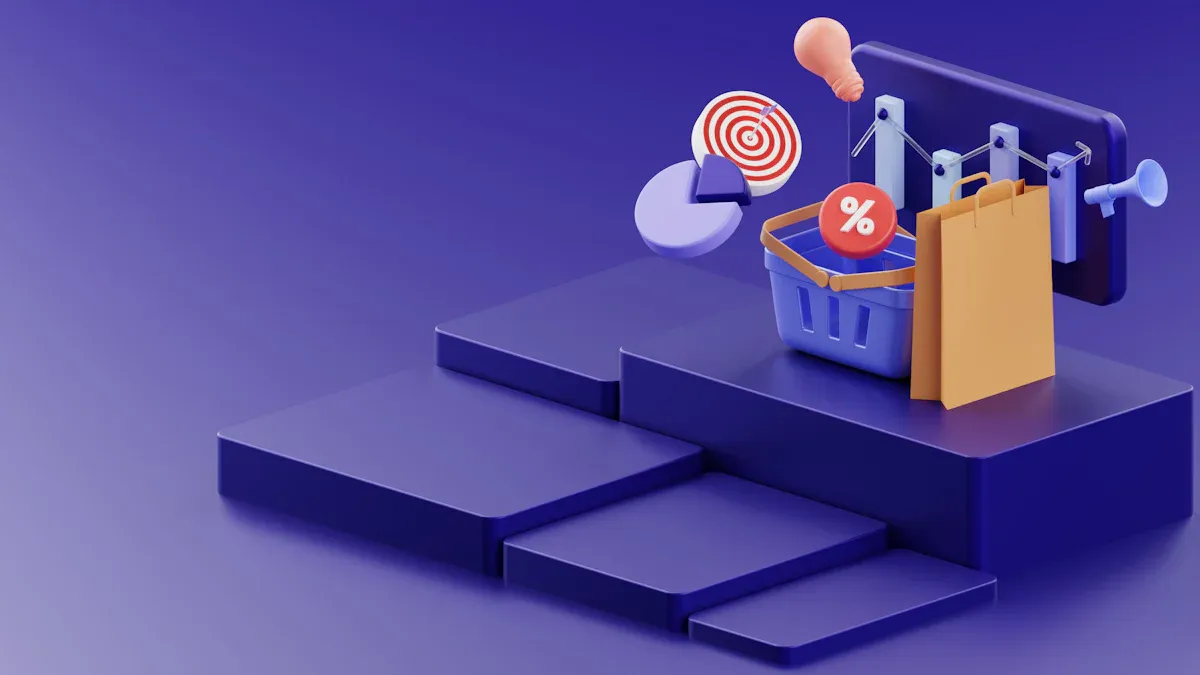
Creator Marketing
You want your shop to stand out. Creator marketing helps you do just that. In 2025, you can build trust and grow your brand by working with creators and influencers. They help you reach new people and make your shop look more reliable. Here are some ways you can use creator marketing:
Build trust by gathering real reviews from happy customers.
Grow your social media presence on Facebook, Instagram, and YouTube. Pick the platforms your customers use most.
Research your market to find what your audience likes and which niches are profitable.
Work with influencers who match your brand. They can show your products to their followers and boost your credibility.
Use email marketing to keep your customers interested and bring them back for more.
Try pay-per-click (PPC) ads to get your shop in front of the right people.
Create helpful content and use SEO to make your shop easy to find online.
Watch what your competitors do. You can spot gaps and improve your own marketing.
Listen to customer feedback. It helps you make better choices and keeps your customers happy.
Tip: When you work with creators, always choose those who share your brand values. This makes your message stronger and more believable.
Data-Driven Ads
You want your ads to work harder for you. Data-driven advertising lets you do just that. By using data, you can spot new trends, target the right people, and get better results from your ads. Here’s how you can make the most of your data:
Use analytics to find out which products are becoming popular. This helps you stay ahead of the competition.
Combine outside market trends with your own shop data. You get a clearer picture of what your customers want.
Improve your website design and user experience. Better design means more people buy from you.
Use SEO tools to find the best keywords. This brings more people to your shop without spending extra on ads.
Personalise your offers based on what customers look at and buy. This makes them spend more and come back again.
Set clear goals like conversion rate, average order value, and customer acquisition cost. Track these to see what works best.
Try advanced tools like cohort analysis to learn more about your customers.
Use automation platforms to keep your stock updated and reduce mistakes.
KPI to Track | Why It Matters |
|---|---|
Customer Acquisition Cost (CAC) | Shows how much you spend to get a new customer |
Customer Lifetime Value (CLV) | Tells you how much a customer is worth over time |
Conversion Rate | Measures how many visitors buy from you |
Average Order Value (AOV) | Helps you see if people are spending more |
Gross Profit Margin | Shows how much you really earn |
Note: When you track these numbers, you can spot problems early and make smarter decisions. This helps you grow your shop without wasting money.
Community Building
You want customers who stick with you. Building a community helps you do this. When people feel part of your brand, they buy more and tell their friends. Here’s why community matters:
Loyal customers come back and buy again. This lowers your costs and keeps your business steady.
People in your community often talk about your shop. Word-of-mouth brings in new buyers without extra spending.
Your community gives you feedback. You can use this to improve your products and service.
Stay active with your community. Share content, host online events, and chat with your customers.
Reward loyal members with special offers or early access to new products.
Brands like Gymshark and Kiyoko Beauty show how a strong community builds trust and helps your shop grow.
If you make your customers feel valued, they will support your brand for years to come. Start small, stay active, and watch your community grow.
Adaptation

Continuous Learning
You can’t stand still if you want to succeed in dropshipping. The market changes quickly. New tools and trends appear all the time. You need to keep learning to stay ahead. Many top dropshipping entrepreneurs use online resources every week. You might watch YouTube tutorials or listen to podcasts on your way to work. Some people join webinars or take short courses to learn new skills.
You can also join online communities and mastermind groups. These groups help you share ideas and learn from others. You will find answers to your questions much faster. You can also keep up with changes to platforms and policies. This helps you avoid problems with your shop.
Here are some ways you can keep learning:
Try out new tools like Facebook Ads, Google Shopping, and SEO.
Use market research tools such as Zigpoll to understand what your customers want.
Watch for updates from Shopify, TikTok, and other platforms.
Join forums and attend webinars to meet other sellers.
AI is also changing how you learn and work. You can use AI-powered product recommendations to personalise your marketing. AI chatbots can answer customer questions day and night. Some AI tools even help you build your website with just one click. Picture recognition technology can sort your product photos for you. AI also makes your marketing faster and more effective.
Tip: Make learning a habit. Spend a little time each week trying something new or reading about the latest trends.
Testing
You never know what works until you test it. Testing helps you find the best products, ads, and website designs. You can start small and see what your customers like. If something works, you can do more of it. If it doesn’t, you can try something else.
Here’s how you can test in your shop:
Run small ad campaigns to see which products get the most clicks.
Change your website layout and check if more people buy from you.
Try different prices and offers to see what brings in more sales.
Use A/B testing tools to compare two versions of a page or ad.
Testing helps you save money and time. You don’t have to guess what your customers want. You can use real data to make better choices. This keeps your business growing, even when trends change.
Feedback
Feedback is your secret weapon. Your customers can tell you what they like and what needs fixing. You should always ask for feedback after a sale. You can use surveys, reviews, or even a quick email. Market research tools help you collect and understand this feedback.
Here’s why feedback matters:
What You Get | How It Helps You |
|---|---|
Honest opinions | Improve your products |
New ideas | Spot trends before others |
Customer loyalty | Make shoppers feel valued |
Fewer returns | Fix problems early |
You should listen to your customers and act on their advice. When you show that you care, people trust your brand more. They come back and tell their friends about your shop.
Remember: The best dropshipping shops always listen, learn, and adapt. If you do the same, you’ll stay ahead in 2025 and beyond.
You know that Dropshipping Trends in 2025 are about picking good suppliers, quick shipping, and using eco-friendly packaging. Try to work with local suppliers for better results. Use automation tools to make your work easier. Make fun social ads to get more people to notice your shop. Give great service and add personal touches to keep customers coming back. Work with influencers and use interactive posts to help your brand grow. Always be curious and keep learning new things. Change your plans quickly when you need to. Even if you try just one new idea, you can stay ahead and help shape the future of dropshipping.
FAQ
What is dropshipping?
Dropshipping lets you sell products online without keeping stock. You take orders in your shop. Your supplier ships items straight to your customer. You never handle the products yourself.
How much money do I need to start dropshipping?
You can start with as little as £100–£500. You pay for your website, marketing, and some tools. You do not need to buy stock upfront. Start small and grow as you learn.
Can I run a dropshipping business from anywhere?
Yes, you can work from home or while travelling. You only need a laptop and internet. Many successful dropshippers work from different countries. Your shop stays open 24/7.
How do I find good suppliers?
Look for suppliers with good reviews and fast shipping. Try platforms like AliExpress, Spocket, or DSers. Always order samples first. This helps you check quality and service.
What are the biggest challenges in dropshipping?
You face tough competition and sometimes slow shipping. Product quality can vary. You must give great customer service. Stay flexible and keep learning to solve problems quickly.
Do I need to register my dropshipping business?
Yes, you should register your business. This keeps you legal and helps with taxes. Check local rules in your country. Many dropshippers start as sole traders or limited companies.
How can I make my dropshipping shop stand out?
Build a strong brand. Use your own logo and packaging. Offer great customer service. Share real reviews and stories. Try new products and listen to your customers.
Is dropshipping still profitable in 2025?
Yes, dropshipping can still make you money in 2025. You need smart tools, good suppliers, and a focus on your customers. Keep up with trends and always look for ways to improve.

TangBuy: A Smarter Way to Dropship in 2025
If you're looking to stay competitive with dropshipping in 2025, speed and trend-awareness are key. TangBuy helps you stay ahead with real-time product trends, fast fulfilment, and factory-direct sourcing. With over 1 million ready-to-ship items, 24-hour order processing, and seamless Shopify integration, TangBuy makes it easier to test, scale, and succeed in today's fast-moving eCommerce landscape.
See Also
Essential Strategies For Achieving eBay Dropshipping Success In 2025
Profitable Dropshipping Concepts To Boost Earnings In 2025
High-Demand Dropshipping Markets To Target In 2025
Comprehensive Guide To Starting A Dropshipping Venture In 2025
